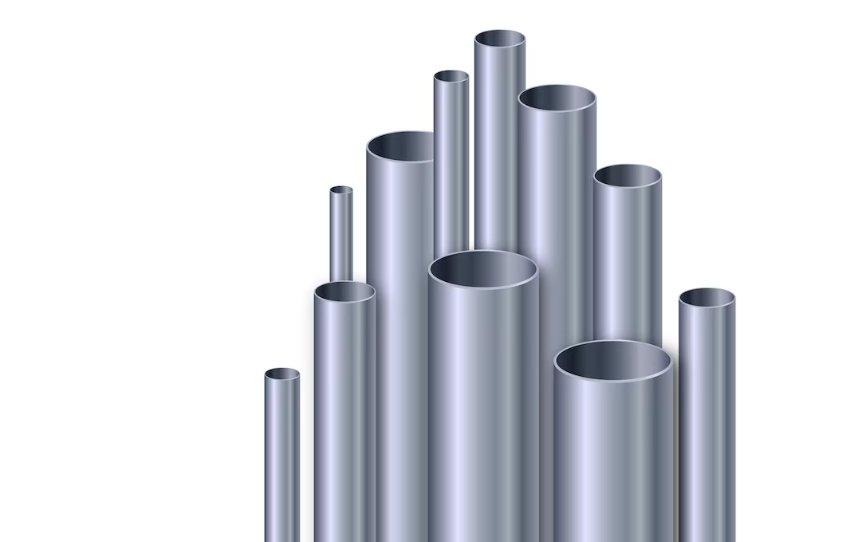Comparison of Solid Shaft and Hollow Shaft Encoder
- 1 Solid Shaft Encoders
- 1.1 Definition and Characteristics of Solid Shaft Encoders
- 1.2 Working Principle and Design of Solid Shaft Encoders
- 1.3 Advantages and Disadvantages of Solid Shaft Encoders
- 1.4 Applications and Use Cases of Solid Shaft Encoders
- 2 Hollow Shaft Encoders
- 2.1 Definition and Characteristics of Hollow Shaft Encoders
- 2.2 Working Principle and Design of Hollow Shaft Encoders
- 2.3 Advantages and Disadvantages of Hollow Shaft Encoders
- 2.4 Applications and Use Cases of Hollow Shaft Encoders
- 3 Factors to Consider when Choosing Between Solid and Hollow Shaft Encoders
- 3.1 Application Requirements and Specifications
- 3.2 Space and Mounting Constraints
- 3.3 Cost Considerations
- 3.4 Future Scalability and Adaptability
- 4 Solid Shaft vs. Hollow Shaft Encoders
Solid shaft and hollow shaft encoders are rotary encoders commonly used in various industries and applications. Solid shaft encoders are directly connected to a motor or machinery shaft and rotate with it, providing accurate position and motion feedback. On the other hand, hollow shaft encoders have a hollow center that allows the shaft of the motor or machinery to pass through, enabling easy installation and flexibility.
Encoders are vital in numerous industries, including manufacturing, robotics, automation, and more. They provide precise position and speed feedback, allowing for precise control and monitoring of machinery and processes. Encoders contribute to improved efficiency, accuracy, and reliability in a wide range of applications.
Choosing the appropriate type of encoder is crucial for optimizing performance and meeting specific application requirements. The comparison between solid and hollow shaft encoders helps users make informed decisions based on their unique needs. By understanding the characteristics and differences between these two types of encoders, individuals and businesses can select the most suitable option for their applications.
In this article, we will delve into the definition of solid and hollow shaft encoders, explore their significance in different industries, and discuss the need for comparing these two types of encoders. By the end, readers will clearly understand the differences and considerations when choosing between solid and hollow shaft encoders for their specific requirements.
Solid Shaft Encoders
Definition and Characteristics of Solid Shaft Encoders
Solid shaft encoders are rotary encoders that directly attach to a motor or machinery shaft. They are designed to rotate along the shaft and provide precise position and motion feedback. Solid shaft encoders typically have a solid construction with a fixed connection to the post, ensuring accurate measurement of rotational movement.
Working Principle and Design of Solid Shaft Encoders
Solid shaft encoders utilize various sensing technologies, such as optical or magnetic, to detect and convert rotational movement into electrical signals. The design of solid shaft encoders includes a rotating disc or wheel with evenly spaced slots or marks and a sensor that detects these changes as the disc rotates. The sensor generates electrical pulses proportional to the position and speed of the shaft, enabling precise control and monitoring.
Advantages and Disadvantages of Solid Shaft Encoders
Solid shaft encoders offer several advantages, including high accuracy, direct coupling to the shaft, and robustness against environmental factors like vibrations and shocks. They provide reliable position feedback, ensuring precise motion control in applications that require accurate positioning. However, solid shaft encoders may have limitations in terms of flexibility during installation and may require mechanical alignment with the shaft.
Applications and Use Cases of Solid Shaft Encoders
Solid shaft encoders find applications in various industries, such as robotics, CNC machining, industrial automation, and positioning systems. They are commonly used in motor control systems, feedback control loops, and applications that require precise position and speed control. Solid shaft encoders are suitable for applications where direct coupling to the shaft is necessary for accurate and reliable feedback.
Hollow Shaft Encoders
Definition and Characteristics of Hollow Shaft Encoders
Hollow shaft encoders, also known as through-shaft encoders, are rotary encoders with a hollow center that allows the encoder to fit around a motor or machinery shaft. Unlike solid shaft encoders, hollow shaft encoders do not require direct coupling to the shaft. Instead, they provide a mounting option where the shaft passes through the center of the encoder, allowing for more installation flexibility.
Working Principle and Design of Hollow Shaft Encoders
Hollow shaft encoders employ similar sensing technologies as solid shaft encoders, such as optical or magnetic, to detect and convert rotational movement into electrical signals. The design of hollow shaft encoders includes a stationary base with a central opening and a rotating disc or wheel with slots or marks. As the shaft rotates, the encoder detects the changes in position and generates electrical signals accordingly.
Advantages and Disadvantages of Hollow Shaft Encoders
Hollow shaft encoders offer several advantages, including ease of installation, flexibility in mounting options, and the ability to retrofit onto existing systems without significant modifications. They provide a convenient solution for applications where direct coupling to the shaft is challenging or impractical. However, hollow shaft encoders may have slightly lower accuracy than solid shaft encoders and may be more susceptible to external interferences.
Applications and Use Cases of Hollow Shaft Encoders
Hollow shaft encoders are widely used in various industries and applications requiring installation flexibility. They find applications in conveyor systems, packaging machinery, robotics, material handling equipment, and other motion control systems. Hollow shaft encoders are suitable for situations where the motor shaft is not easily accessible or when there is a need for retrofitting existing systems.
Factors to Consider when Choosing Between Solid and Hollow Shaft Encoders
Application Requirements and Specifications
When selecting between solid and hollow shaft encoders, it is crucial to consider your application’s specific requirements and specifications. Determine the necessary resolution, accuracy, and signal output of the encoder that aligns with your application’s demands. Consider factors such as speed range, environmental conditions, and the type of motion involved to ensure the chosen encoder can meet the performance criteria.
Space and Mounting Constraints
Evaluate the available space and mounting options within your system. Solid shaft encoders require a direct coupling to the motor shaft, which may be challenging in confined spaces or when dealing with complex mechanical setups. In such cases, a hollow shaft encoder provides greater flexibility as it can fit around the shaft, allowing for easier installation and compatibility with various shaft sizes.
Cost Considerations
Budgetary considerations play a significant role in the selection process. Compare the costs of solid and hollow shaft encoders, considering factors such as the initial investment, installation expenses, and any additional hardware required. Additionally, assess the long-term costs, including maintenance, replacement, and potential system upgrades. A comprehensive cost analysis will help you make an informed decision based on your budget constraints.
Future Scalability and Adaptability
Anticipate future requirements and potential changes in your system. Evaluate the scalability and adaptability of both solid and hollow shaft encoders. Consider whether you need to upgrade or modify your system in the future and assess how easily each type of encoder can accommodate those changes. Flexibility and compatibility with different systems or motor types may be crucial factors for long-term scalability.
By carefully considering these factors, you can make a well-informed decision when choosing between solid and hollow shaft encoders. This ensures that the selected encoder meets your application’s requirements, fits within the available space, aligns with your budget, and allows for future scalability and adaptability.
Solid Shaft vs. Hollow Shaft Encoders
| Features | Solid Shaft Encoders | Hollow Shaft Encoders |
| Mounting | Direct coupling to shaft | Fits around the shaft |
| Space Requirements | Requires additional space | Space-saving solution |
| Compatibility | Limited to specific shaft sizes | Compatible with various shaft sizes |
| Installation | Complex installation | Easier installation |
| Flexibility | Limited flexibility in mounting options | Greater flexibility in mounting options |
| Cost | Generally lower cost | Potentially higher cost |
| Scalability | Limited adaptability for future changes | High adaptability for future changes |
| Applications | Suitable for specific applications requiring direct coupling | Versatile and adaptable to different applications |
In conclusion, solid and hollow shaft encoders play crucial roles in various industries and applications where precise motion and position sensing are required. Solid shaft encoders offer direct coupling to the shaft, while hollow shaft encoders provide a space-saving solution with greater flexibility in mounting options. The choice between these types depends on application requirements, space constraints, cost considerations, and future scalability. By carefully evaluating these factors, you can select the most suitable encoder that meets your needs.

















